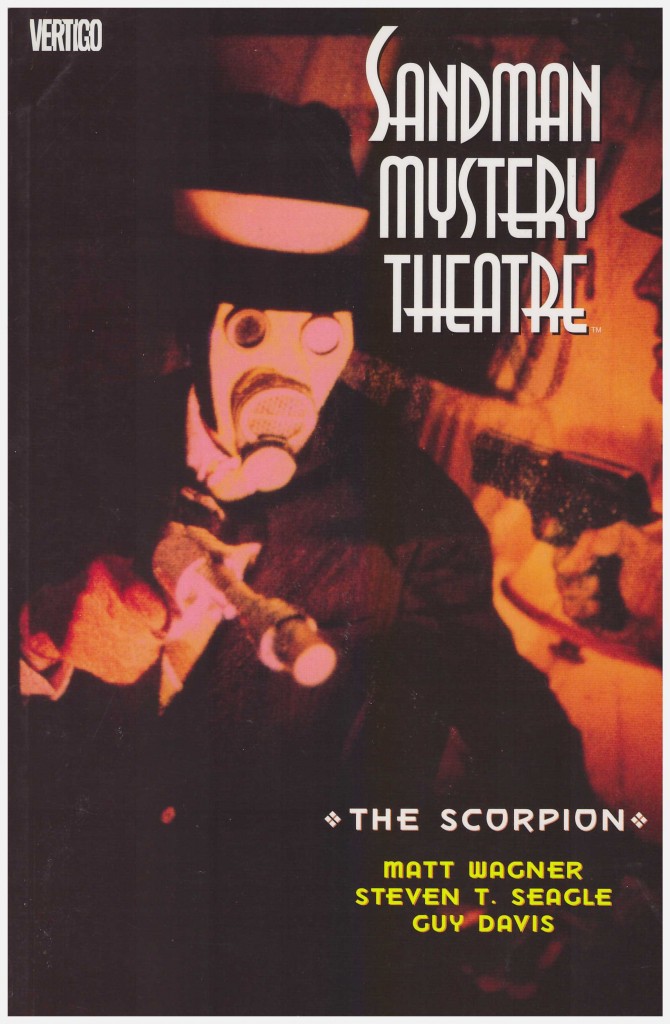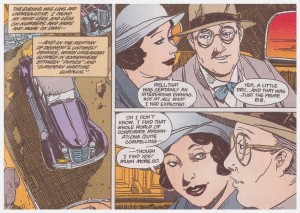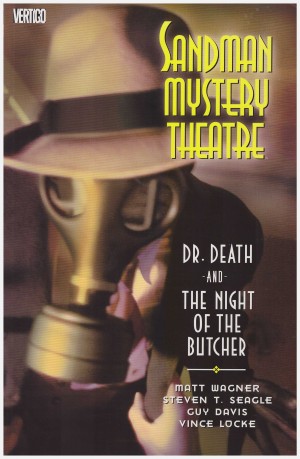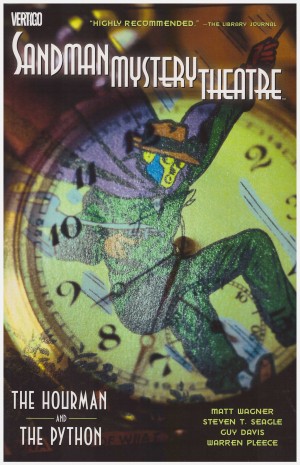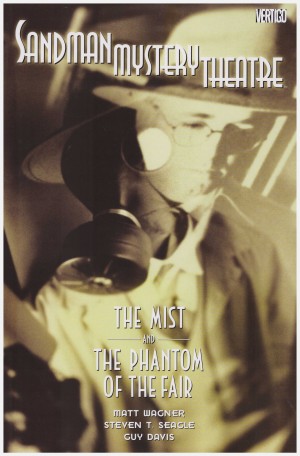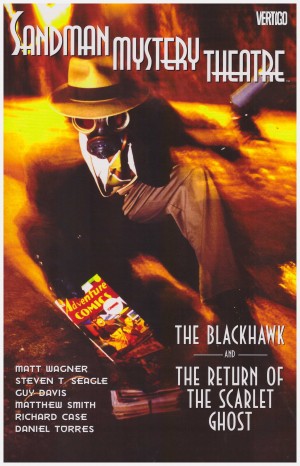Review by Frank Plowright
It’s not immediately apparent because the surrounding material is so compelling, but each Sandman Mystery Theatre sequence revolves around a social issue. In The Scorpion‘s case it’s class and prejudice. Wesley Dodds is targeted by a group of investors who propose he share in their plan to export desperately needed oil to Europe, already gearing up for World War II. He desires no part of war profiteering, but there’s a persistence to his pursuers.
The already introduced coroner Hubert Klein is added to Sandman’s list of sources in a well played scene. Despite the gas mask and gun pointed at him, he instinctively realises Sandman is no villain, which is a level or three above Lieutenant Burke’s insight. Burke’s black and white world has parallels with the manner in which New York society views Texans, or the rich view the poor, both relevant to this tale of long-harboured grudges. The mystery of the title is all-but absent from the narrative as writers Matt Wagner and Steven T. Seagle rapidly narrow the culprits, but as that’s not essential, the story survives.
The heart of the volume, as ever, is the relationship between Dodds and Dian Belmont. The inconveniences of maintaining a relationship and a double life are impacting on both, and by the end of the volume he’s reached a decision to confide in her. In a fine piece of writing, however, there’s a twist at the end of the volume referencing an element introduced soon after their first meeting.
Anachronism is frequent element of Sandman Mystery Theatre, but never emphasised. It’s most apparent in the modern attitudes, but there’ll also be moments such as the complicated John Woo style stand-off presented here. Guy Davis apparently barely researched his settings, but he’s so convincing in every respect, and such a fine artist overall, that this is an astonishing insight elevating him still further.
Two stories are combined in volume five, Dr Death and the Night of the Butcher.
